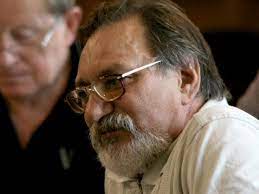Транзитні шляхи завжди відігравали, якщо не визначальну, то принаймні дуже важливу роль у процесі соціального, економічного, політичного та культурного життя населення Східної Європи. Насамперед це безперечно стосується Великого шовкового шляху, що проходив із заходу на схід через безліч країн Євразії та поєднував цивілізації Сходу та Заходу, але також "шляху із варягів у греки" та "бурштинового шляху", які йшли від Балтійського до Чорного моря – від Скандинавії і балтськіх народів через східнослов'янські землі до Візантії та Оттоманської Порти. Але не зважаючи на унікальну роль та значення, що мали ці транспортні артерії середньовіччя для розвитку як регіону в цілому, так і його окремих частин, вони й досі залишаються недостатньо дослідженими і потребують ретельної уваги науковців.
З огляду на зазначене, Відділ археології Києва спільно з Відділом давньоруської та середньовічної археології Інституту археології НАН України під егідою Міжнародного союзу академій наук (MAI – IUA) готують до друку збірку наукових праць, що присвячується пам’яті дослідника давньоруських, балтських і скандинавських старожитностей Володимира Зоценка (1953–2009).
Запрошуємо Вас долучитися до підготовки збірника та вшанування відомого вченого. Статті та публікації, обсягом до 2-х друкованих аркушів (включно з ілюстраціями, списком літератури та його транслітерацією), просимо надсилати до 1 вересня 2023 р. за адресою: .
Матеріали мають бути оформлені за вимогами до видання ІА НАН України "Археологія і давня історія України". Список літератури та посилання у тексті мають відповідати "Порядку оформлення бібліографічного опису ІА НАН України". Просимо звернути вашу увагу на дотримання правил оформлення та термінів подачі статей. Матеріали, що надійшли до редколегії після 1 вересня 2023 р. не розглядатимуться. Статті, оформлені неналежним чином, будуть повернуті авторам на доопрацювання. Оргкомітет також залишає за собою право відбору публікацій.
Оргкомітет
Інформаційний лист у форматі .doc
Intermarium in the Middle Ages. Archaeology of intercivilizational contacts
Transit routes have always played an important, if not determinative, role in the social, economic, political, and cultural life of the peoples of Eastern Europe. Primarily, this undoubtedly refers to the Great Silk Road, which ran from West to East through many countries of Eurasia and connected the Civilizations of the East and West, but also to the "way from the Varangians to the Greeks" and the "Amber Road" that ran from the Baltic to the Black Sea-from Scandinavia and the Baltic peoples through the East Slavic lands to Byzantium and the Ottoman Porte. But despite the unique role and importance of these Medieval transport arteries for the development of both the region as a whole and its individual parts, they still remain insufficiently researched and require attention from scholars.
In view of the above, the Department of Archaeology of Kyiv together with the Department of Ancient and Medieval Archaeology of the Institute of Archaeology of the National Academy of Sciences of Ukraine under the patronage of the International Union of Academies of Sciences (MAI – IUA) are preparing for publication a collection of scientific papers dedicated to the memory of the famous researcher of the Old Rus', Baltic and Scandinavian antiquities Volodymyr Zotsenko (1953–2009).
We invite you to participate in the preparation of the volume and honour the famous scientist. Please send articles and publications up to 80,000 letters (including illustrations, references and their transliteration) to the address: by September 1,2023.
The materials should be prepared in accordance with the requirements for the publication of the IA of the NAS of Ukraine "Archaeology and Ancient History of Ukraine". The bibliography and references in the text should comply with the "Procedure for the bibliographic description of the IA NAS of Ukraine". Please pay attention to the rules of formatting and deadlines for submitting articles. Materials received by the Editorial Board after September 1, 2023 will not be considered. Articles that are not properly formatted will be returned to the authors for revision. The Organizing Committee also reserves the right to select publications.
Organizing Committee


